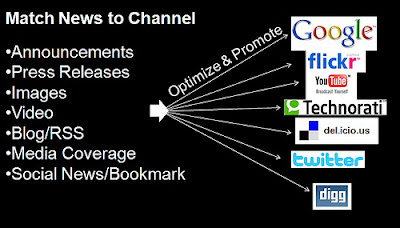 |
| From NMT Images |
Twitter follow
In spite of the huge changes Social Media has caused in the way information is created and distributed, the untargeted, word-dense travel press release still dominates.
It’s the type most often sent to travel bloggers (and off-line media) in the hope that someone somewhere will pick it up and run with it.
Except almost no one “runs with,” or publishes a generic, one-way press release.
However, a release on which a compelling, timely and relevant story can be built is a treasure.
What's the difference?
Stories that evolve into a press release spring from the “open” or “invitational” release.
David Meerman Scott, author of the provocative The New Rules of Marketing and Public Relations says he’s received about 25,000 press releases in the last five years, none of which has resulted in an article.
Why? Because he goes looking for what interest him, and when he finds the topic he wants to explore, he may then check out a related press release.
The kinds of press releases most likely to lead to a story are not the kinds that “push information out (“closed”), but ones that invite the writer or journalist in, “open.”
An 850 word release from Cunard about the Queen Elizabeth’s spa offerings read" “Cellulite Reduction and Revitalizing Leg Therapy by Ionithermie: This detoxifying, firming and toning treatment helps to eliminate toxins using faradic and galvanic stimuli. Alleviates water retention...”
Unless this was sent to "health/spa bloggers, where's the value? And what does it mean?
Un-targeted releases, (addressed to no specific writer and his/her content niche) are virtually spam.
We don’t have it down to a science, but we watch our numbers, read comments and generally get a sense of what the public is interested in when it comes to travel content.
Highly viewed pieces usually have to do with the mix of technology and travel, or provide insights into a destination and the travel experience.
Releases that don’t kindle much interest or have much sparkle are usually written to satisfy the client, not to engage the media, or reader. They’re only about the product or destination.
A piece on Fairmont Hotels’ new policy of supplying guests with an iPad in every room
worked because its was a novel concept, tied into technology trends and hotel stays.
When a PR company alerted me to a new program, a bidding contest for luxury properties, they suggested I eavesdrop on their on line community and listen to what the members were actually saying about these luxury vacations.
It was fun, living, and tied to Social Media values and practices.
The release led to a partnership with the PR company which turned into, I think, a popular piece.
A recent 1000 word release filled with blue links about a special wine tour was just words thrown at me.
Recent studies, by the way, have shown that live links detract from engaging the content because the mind is distracted by them.
Even deciding whether to click on a link is distracting.
The good news is that a travel press release can set the stage for interaction between writer and publicist, resulting in dynamic articles.
Don't try to get all the pertinent information out.
Try to draw the reader in.
Have a Travel PR question? Ask us. We'll give an pinion, at least
Comments